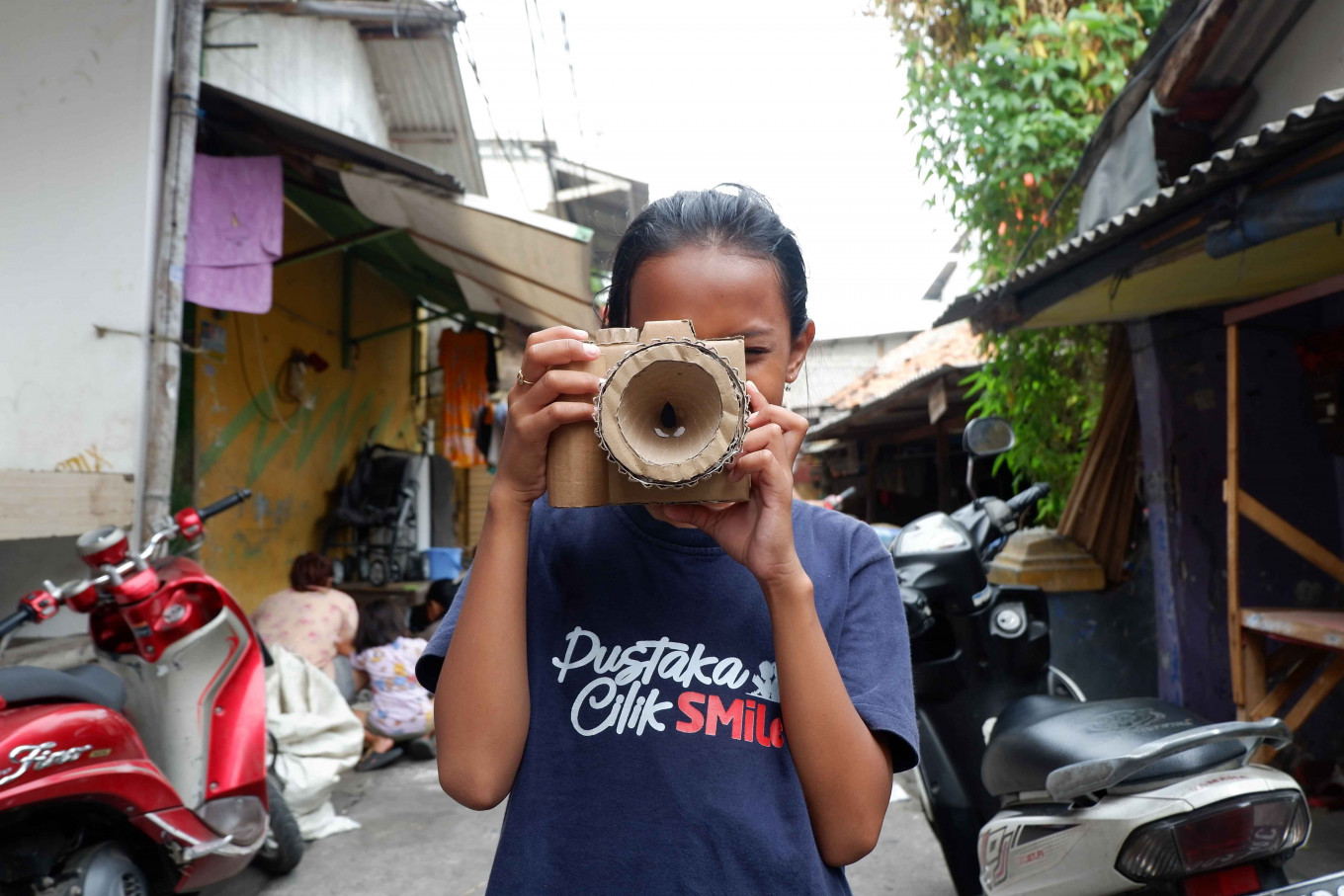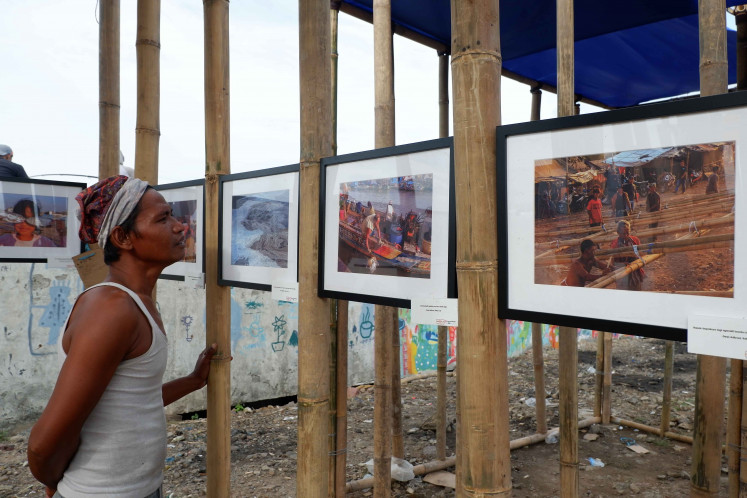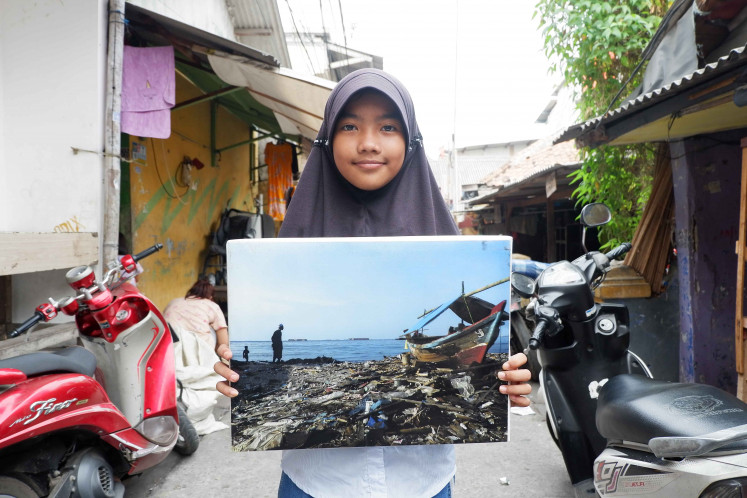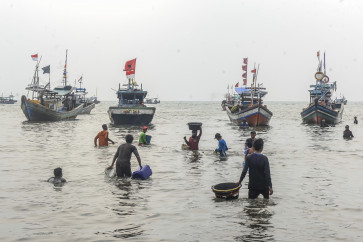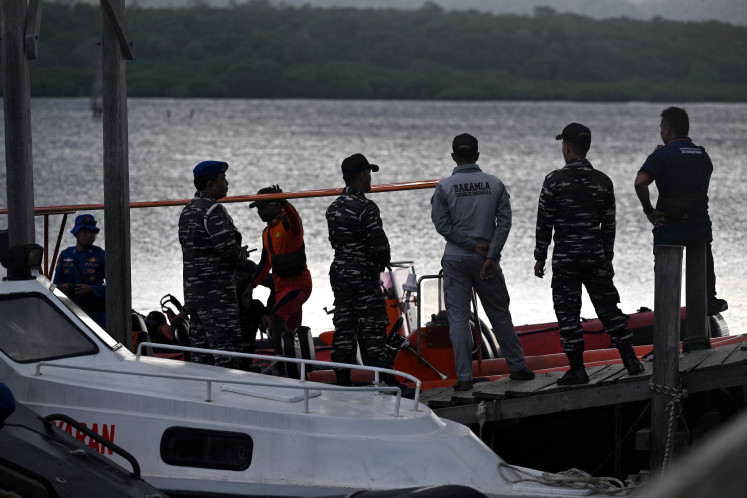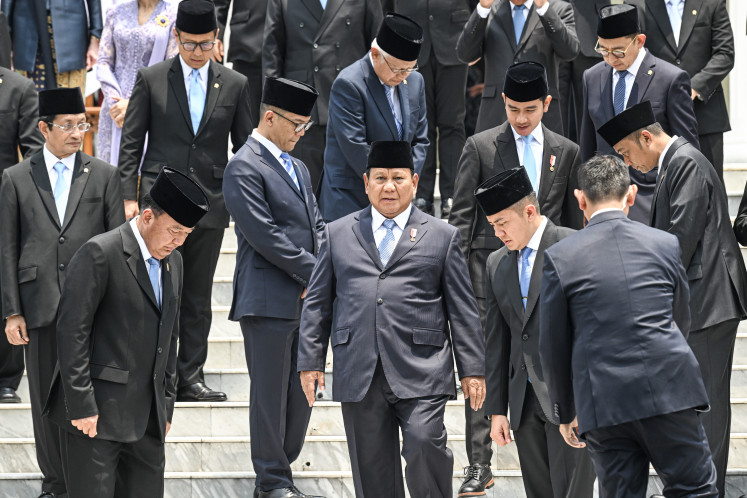Popular Reads
Top Results
Can't find what you're looking for?
View all search resultsPopular Reads
Top Results
Can't find what you're looking for?
View all search resultsKelas Jurnalis Cilik empowers Cilincing youth through journalism
Freelance journalist Syamsudin Ilyas is empowering the children of Cilincing, North Jakarta, through a free, four-month journalism course provided by Kelas Jurnalis Cilik, the nonprofit community empowerment program he founded.
Change text size
Gift Premium Articles
to Anyone
F
reelance journalist Syamsudin Ilyas is empowering the children of Cilincing, North Jakarta, through a free, four-month journalism course provided by Kelas Jurnalis Cilik, the a nonprofit community empowerment program.
Jakarta-based freelance journalist Syamsudin Ilyas believes that journalism is crucial to helping children develop their creativity, sharpen their critical thinking skills and build character.
Armed with this belief, the alumnus of the Antara School of Journalism founded Kelas Jurnalis Cilik (little journalists class) in 2018. The program provides a free journalism course for underprivileged children in Kalibaru district of Cilincing, North Jakarta.
The course is designed to match the skills level of the participants, who range from elementary to junior high school students, and is four months long.
The first month introduces the children to writing and the principles of journalism, which is then followed by basic photography in the second month. In the third and fourth months, they are sent on an “assignment” around the neighborhood, during which they are free to write stories and take the accompanying photographs, putting in practice everything they have learned.
Several other journalists have joined the program as volunteer instructors, including Mast Irham from the European Pressphoto Agency (EPA) and Adek Berry from Agence France-Presse (AFP).
Syamsudin’s introductory course also covers the 5W and 1H of journalism, referring to what, where, when, why, who and how, as well as lighting and angles in the photography segment.
“The 5W1H lessons have made the children more critical,” he noted.
Public exposure: A visitor looks at photos captured by the Cilincing children, which are displayed at the Ragam Ilusi di Ufuk Pesisir exhibition, held by Kelas Jurnalis Cilik in the area's Kalibaru soccer field. (JP/A.Kurniawan Ulung) (JP/A.Kurniawan Ulung)Tackling challenges
As Kelas Jurnalis Cilik turns four this year, it is facing various challenges, especially since 80 percent of the children in Cilincing help with their parents’ work after school. Most of the children catch fish, while others clean and shell clams.
Syamsudin has received pushback from parents wondering why their children should join the program instead of helping the family by working.
“The parents question the benefits of the course for their children,” he said.
In addition to parents, the neighborhood unit (RT) and community unit (RW) heads also wondered if the program offered a cash reward for their areas.
“Our course is free of charge and is not financially supported by any institution,” Syamsudin said, emphasizing that the children would not earn any money through the nonprofit program.
But because many community empowerment programs in Cilincing offered cash aid or sembako (food aid) for the participants, he said, “We cannot blame society for thinking that way.”
Inviting children to join the program was also challenging, as Syamsudin noticed that many Cilincing children spent too much time on their gadgets playing games and surfing the internet, while they spent less time with their families and friends.
Syamsudin grew even more concerned when he observed that parents did not seem to be monitoring the amount of time their children spent online. He also found that some children were using expletives after hearing such words online.
The internet’s negative impacts on the children’s mental, physical and emotional development worried him, so Syamsudin decided to teach them how to use their smartphones in a fun and positive way by taking photographs in the Kelas Jurnalis Cilik course.
“We don’t teach children journalism in a way that they will feel it is a [chore]. That’s why we learn while playing,” he said, pointing to the program’s motto of “Belajar, Bermain, Membingkai Imaji” (learn, play, imagine).
Syamsudin, who took the ToT teacher training course in 2015 at the PannaFoto Institute, an educational organization that offers courses on photography and visual storytelling, said games helped children understand learning materials, such as on the history of photography, which even adults would find difficult to grasp.
Prior to teaching the Cilincing children how to use digital cameras, for example, Syamsudin asks them to make a camera out of cardboard. He then sends the children out into their neighborhood and tells them to “record” anything that interests them using the cardboard cameras they made.
This activity introduces them to what real photojournalists do while on an assignment. At the same time, it helps develop their memory, as they must remember the objects they see.
The activity also helps them develop close ties with their peers while encouraging them to speak to the new people they meet. Part of their task involves approaching people to ask for their permission to photograph them, just like professional photojournalists, and teaches them that such interactions are among the ethics of journalism.
When they return from their “assignment”, each student must explain the story they were following. Saymsudin said storytelling skills were essential for children in developing their communication skills, as well as their confidence.
Third grader Fika Dwi Julianti said that Kelas Jurnalis Cilik had helped her be more confident and tech savvy. She added that the program was fun, because it was full of games and helped her to make new friends.
As for Syamsudin, he noted that the young participants were now able to “communicate well when meeting new people”.
“They are no longer afraid when I take them to places [outside Cilincing],” he added.
Beneficial program: Third grader Fika Dwi Julianti shows her photo that features a boat by the sea in Cilincing. Fika said that Kelas Jurnalis Cilik helps her gain confidence and new friends. (JP/A.Kurniawan Ulung) (JP/A.Kurniawan Ulung)Bigger impact
Syamsudin said the program aimed to have a wider impact, and that he hoped Kelas Jurnalis Cilik would motivate the children to share the good things about their kampung through their photographs.
To this end, the group held a photo exhibition titled “Ragam Ilusi di Ufuk Pesisir” (illusions from coastal shores) at Kalibaru soccer field from Sept. 16 to 18, featuring photographs the children had taken using Syamsudin’s digital camera or their parents’ smartphones.
Iqbal Rifai, a seventh grader, said he was happy to see his photos on display, and that they had been seen by many people. He also noted some of the challenges he experienced while taking his photos, such as setting the flash, looking for a good shot and asking people’s permission to take their photographs.
“It was an exciting experience,” said the young photography enthusiast, whose pictures include one of old men in a boat at sunset.
“We held this exhibition to appreciate the children’s work after they learned about photojournalism,” said Syamsudin, who added that he hoped the exhibition would inspire others.
He also expressed the hope that the children’s photographs would help change Cilincing’s image: that the area had interesting objects to capture through the camera lens, and that it was not just a slum with unruly children, as was so often portrayed in the mainstream media.
“I want to change that,” he said.

